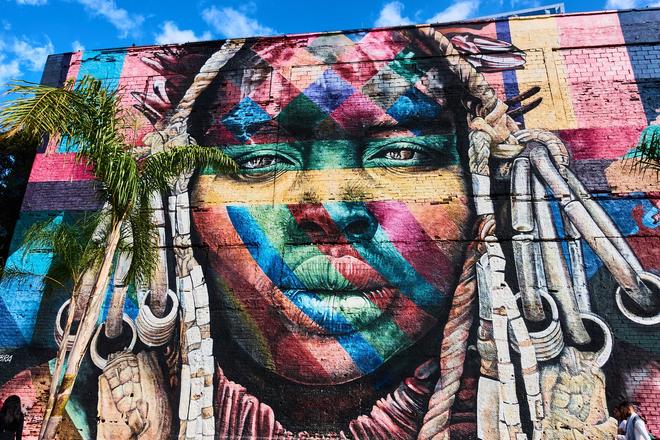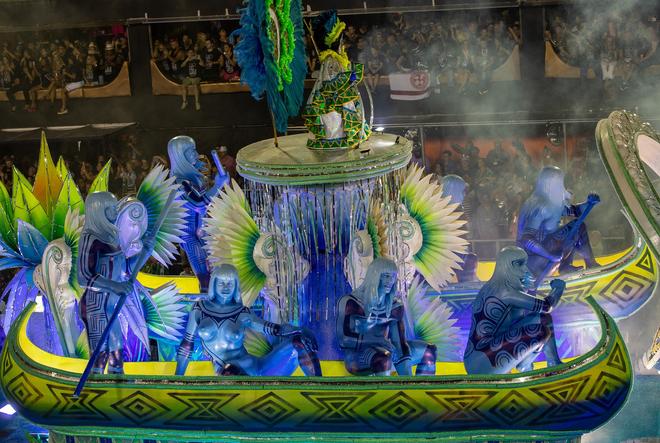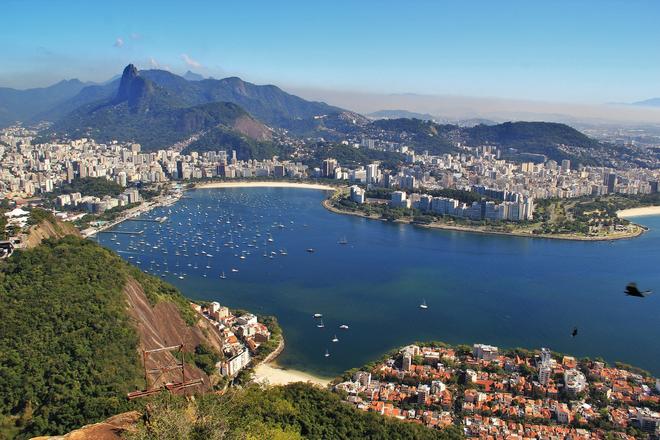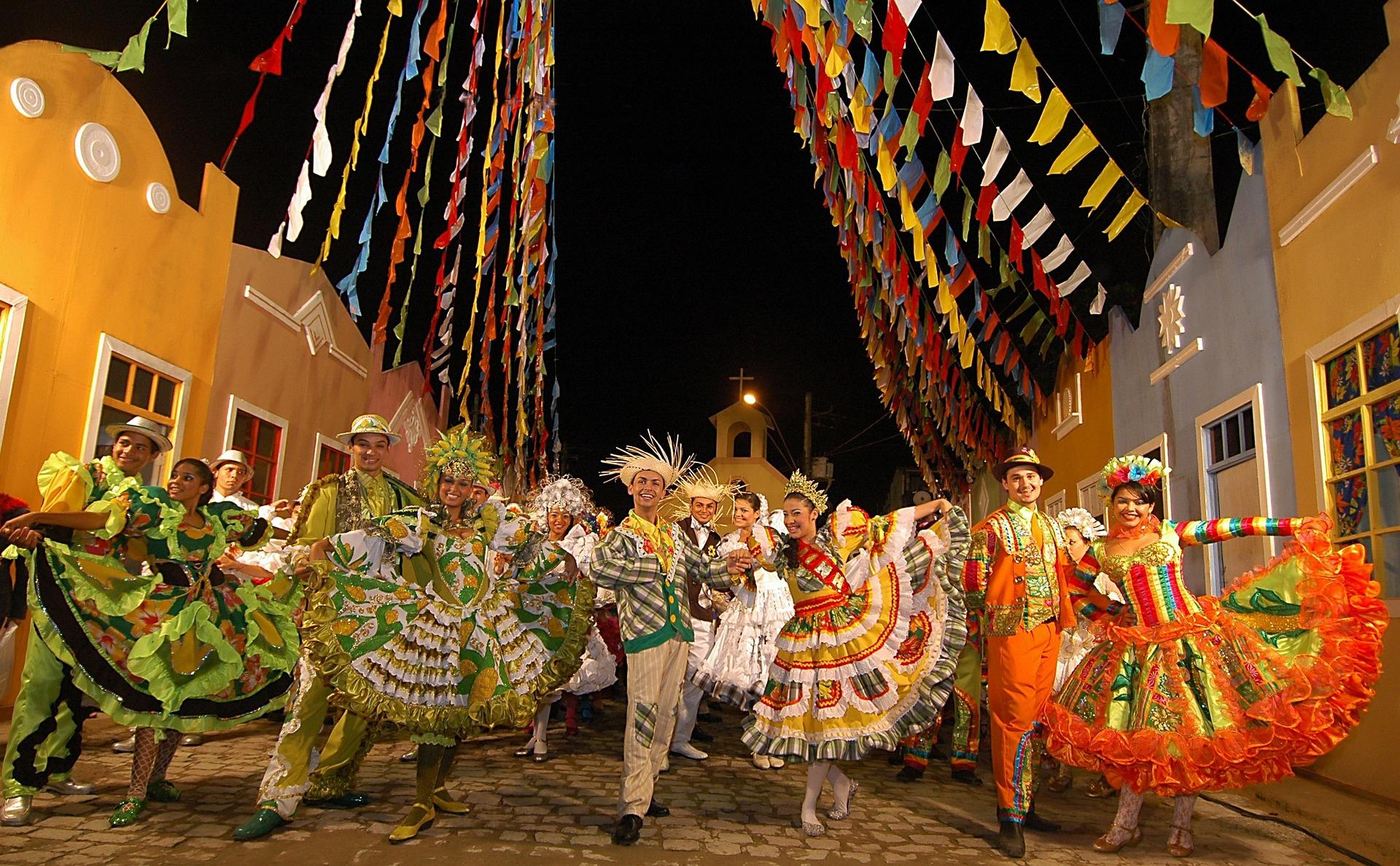Many dream of experiencing Carnival in Brazil! So why not make it a reality? Try the northeast of Brazil, where the indigenous Indian population mixes with the Portuguese and Africans that the Portuguese brought to the country as slaves. Just as Brazil's population is diverse yet intriguingly interconnected, so too are its similarly diverse individual states, which number 27 in total.
The colourful Northeast
The north is more traditional and colourful than the post-European, westernised south (namely the state of Paraná), which in turn is a little different from the famous Rio. So it's the same with Carnival, regions differ – especially in music and dance: for Rio de Janeiro, São Paulo and Vitória it's the famous samba, for the northeastern state of Alagoas (namely the city of Maceió) it's frevo, for the state of Pernambuco (especially the cities of Recifeand Olinda) it's maracatu (or maracatu nação).
What you immediately fall in love with in the north and northeast are the colours: compared to the north, São Paulo or Cascavel in the European-influenced state of Paraná, for example, are quite grey, drab areas where people move for education and work. In Cascavel, even the carnival doesn't have an established tradition.
Colours in the streets
The houses in the north and northeast are blue, red, yellow and orange – a beautiful, typical example of this colourful architecture is the historic town of Marechal Deodoro, named after Brazil's first president. Everywhere you go, you can admire street art and graffiti, not tacky, but real art! Even advertisements on houses, on half-broken walls and columns, paint is used here – no posters needed, just attractive paint to make a statement - it can then be painted over later.

The colours are multiplied at carnival time. In supermarkets, colourful scrawls appear on food shelves, colourful streamers hang everywhere, and theatrical masks made of paper and fabric form decorations on houses. People in parades wear colourful clothes (often special T-shirts or shirts for a particular parade in a certain town or neighbourhood), sometimes masks (for example, the one from Scream is very popular) and costumes (especially in samba areas, because each samba school has its own version of costumes for that particular carnival) and boys like to dress up as girls (Brazil is strongly Catholic – although spirituality is growing in popularity lately – but homosexuality is quite common) – and they like to wear bikinis.
Parades, dance and samba schools
While in Maceió parades pass through given locations at given times (all the schedules can be found online) with a main float carrying musicians (replaced by a loudspeaker if they are not available or are too drunk!) to the rhythm of the frevo dance, in São Paulo or Rio it is the traditional samba that sounds through the streets.
Although the origins of samba are rooted in African tribal culture, the form we know today is thanks to Rio's famous favelas. These are shanty towns where many descendants of former slaves gradually moved – the first favela appeared in the late 19th century. The first favela was born in Rio, when soldiers after Guerra de Canudos started to set up these neighbourhoods to give themselves a place to live, in the slums that are located in the hills near the rich neighbourhoods.

The most important samba schools are from here, and fans of each school buy costumes online long before the carnival to join the most famous parades at the Sambódromo. If you don't want to enjoy your hour or so of fame in the parade, where you only pay for the costume, the price of which varies according to the theme of the school (each school in the parade tells a story with its costumes, dance and performances, be it myth, historical event or a point of view on social, environmental or international issues) and the specific role you will play, but only prefer to watch all the pageantry, you can (again, online) buy tickets for a specific night and watch the show as a spectator.
If you don't want to invest a penny in the parades, just check the main festival website to find out which open parades, called blocos, will be taking place in the city and at which times, and just join in. Or find out when the samba schools have rehearsals before the actual performance and go and see them in the favelas – of course take care, these areas are portrayed as being dangerous; crime, gang-on-gang shootouts and police are inherent in the slums here. But, If you have an open heart and mind, and a bit of luck to boot, you'll probably pick up some incredible energy here and have a lot to remember.
The famous Rio de Janeiro
Rio de Janeiro, translated as "River of January", was founded by colonists from Portugal in 1565. It is Brazil's second largest city after São Paulo and was the capital from 1763 to 1960. Nowadays it is one of the most visited places in the southern hemisphere thanks to its carnivals, beaches, the statue of Christ the Saviour and the Sugar Loaf.

Every neighbourhood in Rio has its own bloco. Today, there are more than 300 in Rio, and each year the number increases – no wonder, the Rio Carnival (which dates back to the first half of the 17th century, to Greek mythology and the god Dionysus, and whose first official edition took place in 1723) is the largest in the world, with two million people on the streets every day. Each street party has its own location, and for the duration of the parade (at least the larger ones) the roads are closed to cars. The parades begin as early as January, although the festival itself doesn't start until before Lent. For the blocos, their organisers usually choose their own accompanying music and the band, if present, includes drums and brass.
Like Rio, São Paulo has several samba schools with traditions that are linked to emigration, class activism and even football teams – schools like Gavioes da Fiel or Mancha Verde started as cheerleaders, cheering fans and players during games in São Paulo's stadiums.
Sambódromo – a feast for the eyes
There's nothing like seeing and experiencing the parade of allegorical floats (with sculptures made of wood, plastic, polystyrene and other materials) and spectacular shows led by the "madrinha da bateria" (godmother of the battery, who tends to be stunningly sexy) and the school flag bearers (mestres-sala), whose performance is carefully observed and judged by the judges of each school, at the Sambódromo, whether in Rio or São Paulo. And of course, these organised shows are much safer than the usual parades in the city, where you're in the crowd and slightly drunk, the perfect feast for pickpockets and thieves snatching purses and wallets out of your hands.
In Rio, floats are currently not allowed to exceed 8 metres and 50 centimetres wide and 9 metres and 80 centimetres high. Some schools always have their symbol on the float – regardless of the current theme of the show: Portela, for example, always has an eagle on its float. The floats are no longer allowed to be driven by machines in order to prevent fires, so they are moved by people – a great honour and responsibility.
If you want to enjoy a safe, normal parade, I recommend Maceió or other smaller towns that are not so touristy at the time of the carnival, when prices for accommodation and restaurants soar to outrageous heights – not to mention how crowded the supermarkets are on the Thursday and Friday before the carnival.
.jpg)
Rio's main Carnival parades take place on Sunday and Monday, after the Friday and Saturday parades in São Paulo. The parades run overnight (starting around 9pm) and end around 5am.
The reality of Carnival
Maceió may not have a Sambódromo, but the streets resound with loud music during the day – and especially at night – with heavy beats and bass resonating through the air, disturbing your sleep even with earplugs (not to mention the fact that the bed beneath you seems to move to the rhythm of the beats!). Everyone just wants to drink and celebrate, so the music is coming from houses, cars, beaches... There's no escape…!
The "Cariocas", the residents of Rio, and the "Paulistanos", the citizens of São Paulo, are very sentimental when they watch their favourite school, whether at the Sambódromo or at home in front of their TV screens. When the winners of the shows are announced, entire families gather in front of the television to cheer their favourites until the last second, and the announcement itself is accompanied by a range of emotions.
The production of costumes and the planning of a parade of about an hour (the maximum time a school can show is an hour and twenty minutes in Rio, an hour and five minutes in São Paulo) with very strict and precise rules (points are deducted for every minor inaccuracy) is a year-long event for each school, with strong disputes – just the choice of the composer of the accompanying song, the lyricist and the singer provokes great emotions and guesswork, because "everything is worth points". It is often said that school slum dwellers may not have jobs or food all year round, but they make sure they have money for their carnival costume.
.jpg)
If you are going to Carnival in the future and want to visit Rio at any cost, prepare yourself materially (the prices are really exorbitant, it's not uncommon to pay fifty euros for a bed in an eight-bed hostel room with old air conditioning and a bad shower during Carnival time) and mentally: in addition to tourists from all Brazilian states, Rio receives up to 500,000 foreign visitors during Carnival time!

